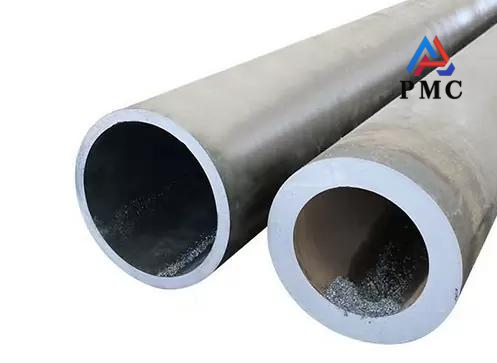Seamless carbon steel pipe is a hollow pipe made of carbon steel through hot rolling, cold rolling or cold drawing. It is named because its pipe wall has no welded seams.
With its high strength, high toughness and good pressure resistance, it can withstand complex stress and high-pressure fluid transportation, and is widely used in petrochemical, electric power, construction and other fields.
Models of carbon seamless steel pipes
The models of seamless carbon steel pipes are mainly classified according to factors such as their manufacturing process, purpose, and size specifications. Common models include 10#, 20#, 35#, 45#, 16Mn, etc. These models represent different chemical compositions and mechanical properties, thus meeting the use needs of different fields. Specifically:
- 10#, 20# seamless steel pipes
Mainly used for conveying fluids, such as water and oil. Its manufacturing process is simple and the cost is low, but the strength and corrosion resistance are relatively low. It is also used in some low-pressure hydraulic piping systems or temporary fluid delivery pipelines.
- 35#, 45# seamless steel pipe
It has high strength and hardness, and is suitable for occasions with high pressure and load, such as oil drilling, bridge construction, etc.
- 16Mn seamless steel pipe
It is a low-alloy high-strength structural steel pipe with good comprehensive mechanical properties and welding properties. It is widely used in shipbuilding, automobile manufacturing, construction engineering and other fields.
Seamless carbon steel pipe classification implementation standard
Seamless carbon steel pipes are subject to different standards based on their use and performance. These standards are key criteria for ensuring product quality and performance.
- Seamless steel pipefor structure: Implement GB/T 8162-2018 standard, suitable for general structures and mechanical structures. Steel pipes of this standard are often used in applications such as building scaffolding in the construction industry and making mechanical frames in mechanical manufacturing. It has strict regulations on dimensional deviation, appearance quality, chemical composition and mechanical properties to ensure stability and reliability in various structural applications.
- Seamless steel pipe for fluid transportation: implement GB/T 8163-2018 standard, mainly used for the transportation of fluids such as water, oil and gas. This type of standard steel pipe is used in urban tap water pipelines and oil transportation pipelines. It focuses on the corrosion resistance and sealing of the steel pipe to prevent fluid leakage and ensure a safe and stable transportation process.
- Seamless steel pipes for low and medium pressure boilers: follow GB/T 3087-2018 standard and are used to manufacture superheated steam pipes, boiling water pipes, etc. for low and medium pressure boilers. It is widely used in the piping systems of industrial boilers and domestic boilers. It needs to have good high temperature resistance and lasting strength to ensure long-term and stable operation of the boiler.
In the industrial field, seamless carbon steel pipes are widely used due to their excellent performance. Common models include ASTM A106, ASTM A334, etc. Seamless steel pipes under the ASTM A106 standard include three grades: A, B, and C, among which A106-B is the most commonly used. This type of steel pipe is widely used in the petroleum, chemical, boiler and other industries. ASTM A334 is a standard for seamless carbon steel and alloy steel pipes for low temperature service, covering multiple grades. A334 Gr.6 is often used in cryogenic equipment, such as the transfer pipes of liquid oxygen storage tanks.
Buying advice: Choose the right product and avoid pitfalls
- Clarify material requirements: Select appropriate materials based on actual usage scenarios. For example, for ordinary structures, Q235 carbon structural steel pipe is an economical and practical choice; for projects that bear greater pressure and load, Q345 low-alloy steel pipe can be considered.
- Precisely control the size: Determine the outer diameter, wall thickness, length and other parameters of the steel pipe according to actual needs to avoid installation problems or waste caused by size deviation. For example, in the construction of oil pipelines, accurate size can ensure that the pipelines are tightly connected and reduce the risk of leakage.
- Investigate the reputation of the manufacturer: Choose a manufacturer with good reputation and perfect after-sales service, and understand the manufacturer’s production capacity, quality control and after-sales service before purchasing to ensure the quality of the product. For example, some large state-owned enterprises or well-known private enterprises have better guarantees in production technology and quality control.
- Pay attention to surface quality: Carefully check the surface of the steel pipe to ensure that there are no obvious cracks, bubbles, scars and other defects to ensure its safety and stability during use. For example, for seamless steel pipes used for food fluid transportation, good surface quality can prevent impurities from mixing in and ensure food safety.
Read more: Density of Seamless Carbon Steel Pipe and lts lmportance

Leave a Reply
You must be logged in to post a comment.